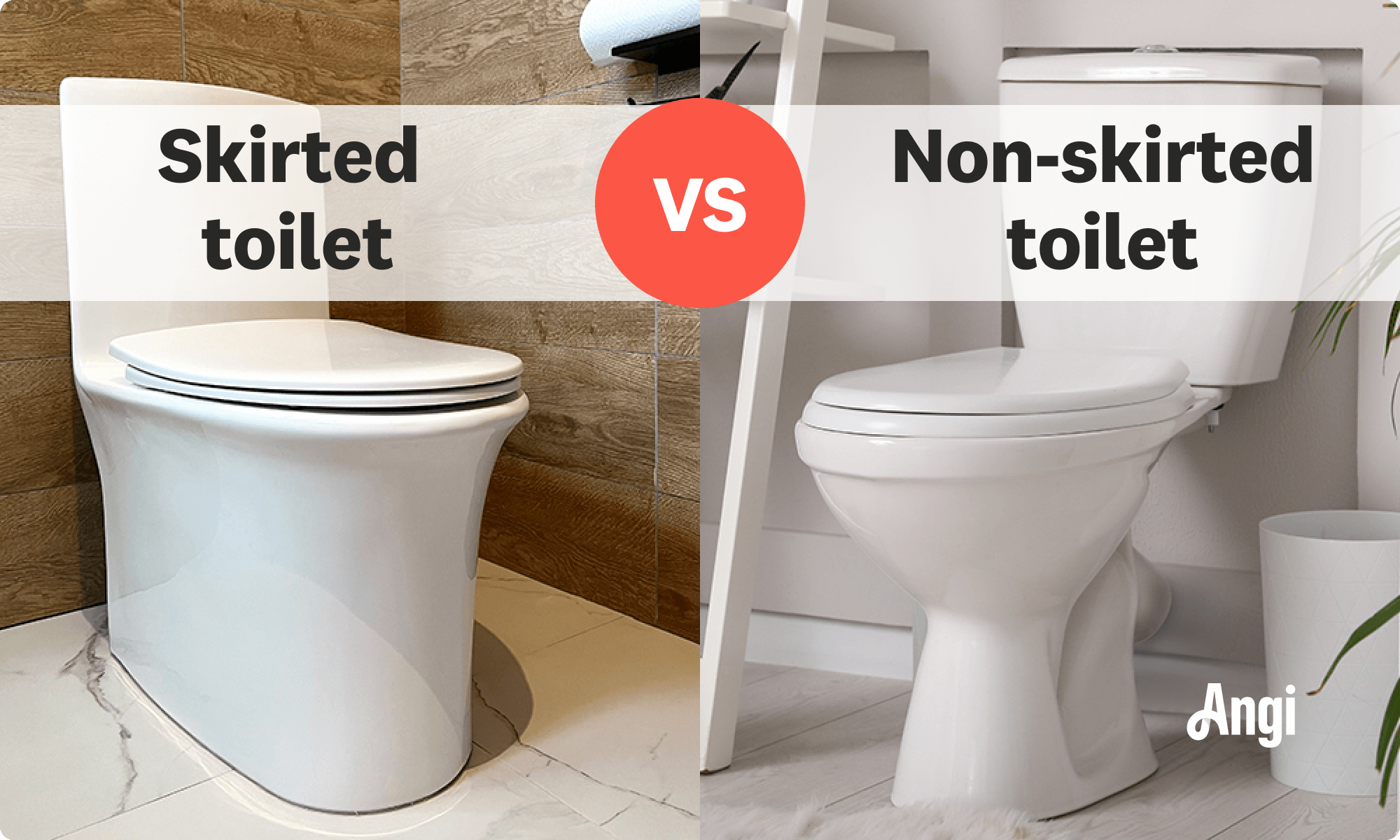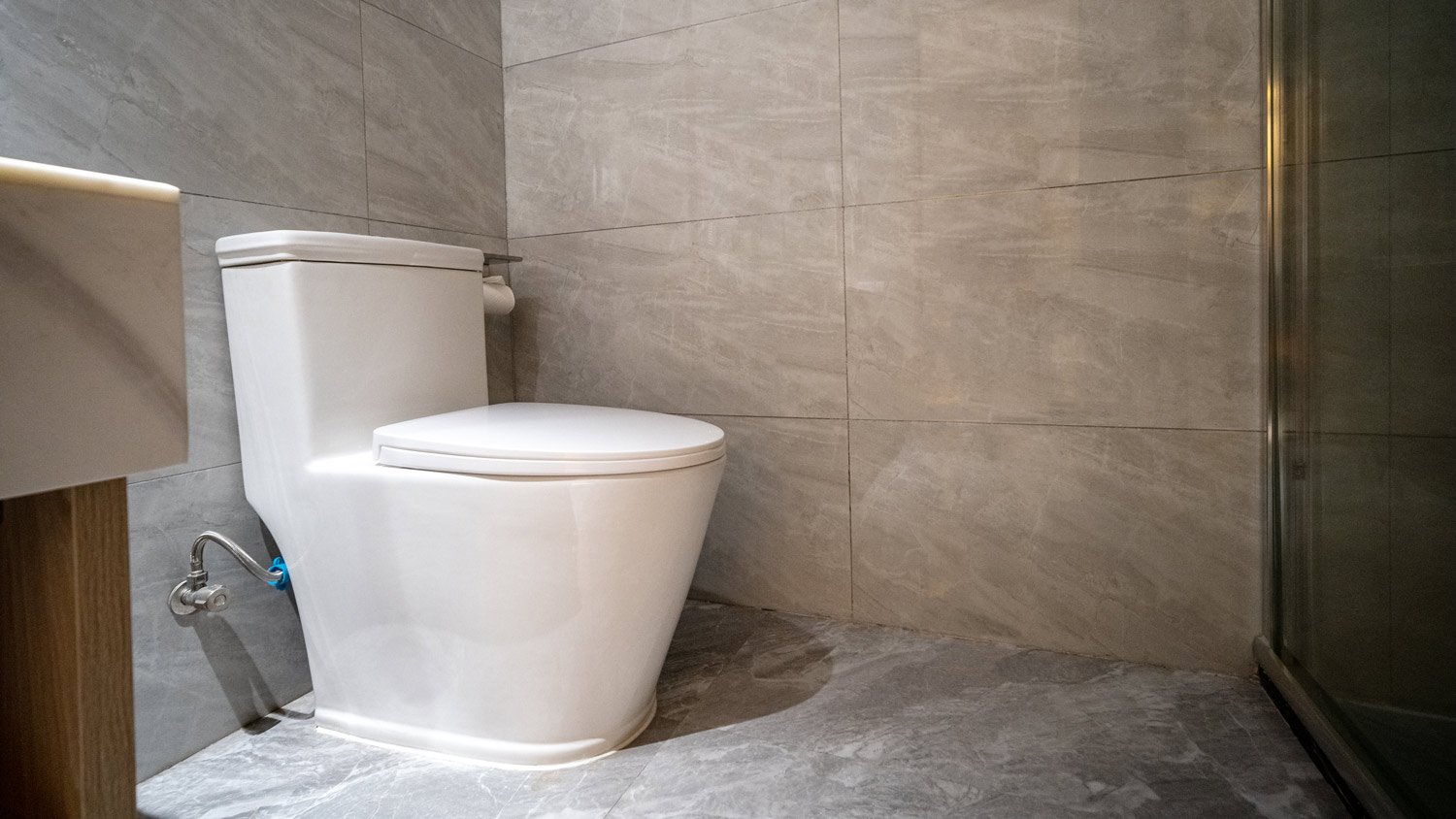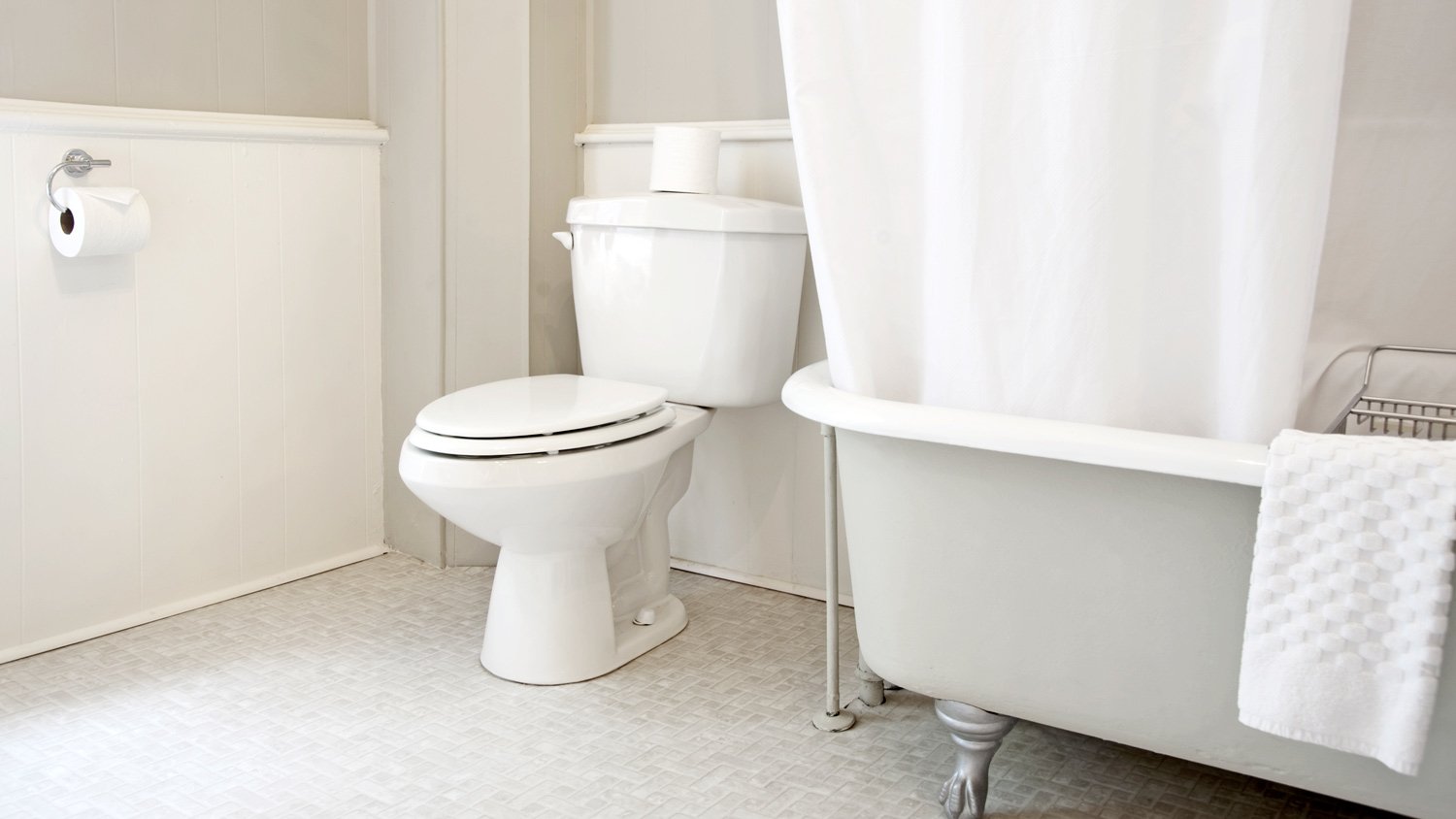
Do you want to add a mudroom to your home but are unsure if it’s within your budget? Use this mudroom addition cost guide to determine your installation price range.
Basic or modern—take your pick


Skirted toilets have an apron around the base, whereas non-skirted toilets do not.
Skirted toilets are easier to clean and have a modern look.
Non-skirted toilets are a classic choice that’s more wallet-friendly.
Getting a new toilet seems pretty straightforward until you notice the sheer number of choices. Looking at skirted toilets versus regular (non-skirted) models is an excellent starting point. Learn the differences between these toilets, including appearance, cost, installation, and more, so you can choose the best one for your bathroom.
The most obvious difference between skirted and non-skirted toilets is their shape and appearance. Skirted toilets have an apron that wraps around the base, which makes for a sleek yet bulky design. Additionally, skirted toilets cost more, while non-skirted ones are easier to clean.


A skirted toilet is bulkier and more seamless than a non-skirted one. Its apron wraps around the base, so you don’t see the piping or bolts. This toilet may be right for you if you’re looking to put together a bathroom with a modern aesthetic.
| Pros | Cons |
|---|---|
| Easy to clean | Difficult to install |
| Contemporary look | Takes up extra space |
| Many add-on options are available | More costly |
Best for:
Bigger bathrooms
Modern spaces
Experienced DIYers
Skirted toilets have practical and aesthetic advantages that might make them a better fit for you. The skirted design is sleek, making it easier to clean. You don’t have to worry about cleaning all the crevices and corners, including areas by the piping.
Moreover, the skirted look fits well in contemporary spaces. Whether you’re going with chic integrated lighting, glass shower doors, smart mirrors, and the like, skirted toilets will complement the space. You’re also more likely to find skirted versions of modern units like smart toilets with heating, automatic flushing, LED lighting, a bidet, and more.
There are a few downsides to skirted toilets. For one, the installation process is more complex than that of non-skirted units, making it challenging if you plan to DIY. You can hire a toilet installer near you if you’re not confident in your DIY skills. Double-check that your pro has experience installing these models if you purchase a skirted toilet, and expect toilet installation costs to range between $45 and $200 per hour for labor.
Secondly, your skirted toilet takes up more space. The difference is negligible if you have a medium- to large-sized bathroom, but the bulky design could be a downside in a smaller space. Finally, skirted toilets cost more than non-skirted ones, so rethink your decision if you’re close to maxing out your budget.
New bathroom fixtures can make your toilet look dingy or outdated in comparison. Now’s the chance to replace it with a modern model, like one with an elongated bowl, to match your bathroom upgrades.

One of the most common types of toilets is the non-skirted version. You likely have a non-skirted toilet installed in your home. The visible S-shaped pipe on the bottom side of the toilet is called the trapway—toilet water flushes into your system via this pipe. The Johnny bolts connecting your toilet to the floor are also visible.
| Pros | Cons |
|---|---|
| Cost-effective | No unique visual appeal |
| Basic installation | Difficult to clean |
| Many models to choose from | Exposed piping and bolts |
Best for:
Smaller bathrooms
Those looking for a basic toilet
DIYers looking for a simple installation process
Unless you have a specific vision for your bathroom, a non-skirted toilet gets the job done. It’s more cost-effective for anyone on a budget, and you’ll have plenty of brands and models to choose from. Chances are you can find exactly what you’re looking for and have extra funds to put toward other elements like flooring, lighting, cabinetry, and more.
The installation process is straightforward, so go with a non-skirted toilet if you plan on doing a DIY job. If you hire a pro to install the toilet for an hourly rate, they will likely complete this job much faster than installing a skirted toilet.
Sometimes, a single design element in your bathroom can transform your space from ordinary to extraordinary. While skirted toilets can have this effect, your non-skirted one is unlikely to offer a visual wow factor unless you get one in a unique color. While there’s nothing wrong with a basic toilet, consider whether your bathroom could benefit from another focal point before making this choice.
The exposed pipes and bolts might also be an eyesore, especially if you’re used to the look of skirted toilets. It also takes longer to clean the exposed area since grime and dust can build up in the nooks and crevices.
If you’re still unsure which toilet to invest in, here are some main differences to consider when narrowing it down.
If you want to stick to your budget, go with a non-skirted toilet. These cost $100 to $300, with most units falling around the lower end of the range. On the other hand, you can spend between $200 and $1,000 or more on a skirted toilet, with an average cost of $400. Granted, if your vision calls for a skirted toilet, you’ll likely want to spend the extra money to get one.
When it comes to regular toilet cleaning, skirted toilets win. They’re easier to clean, so you’ll spend much less time scrubbing the toilet. Additionally, for toilet maintenance—like checking your flapper, fill valve, and wax ring—there aren’t any differences between skirted and non-skirted toilets.
Overall, skirted toilets are more aesthetically pleasing. You will have to commit to giving up some extra space, but as long as you can forgo the square footage, they have a modern look that non-skirted toilets don’t provide.
It’s much easier to install non-skirted toilets. Your toilet installer has more room to work, and the process is straightforward. On the other hand, installers have less space to work when installing skirted toilets, especially when connecting the water supply and installing the bolts. Depending on your skirted toilet model, your pro might need to do extra drilling and mounting.
From average costs to expert advice, get all the answers you need to get your job done.

Do you want to add a mudroom to your home but are unsure if it’s within your budget? Use this mudroom addition cost guide to determine your installation price range.

Whether you're dreaming up a new office or a peaceful sunroom, home addition costs will shape your design. Learn what to expect for every vision.

Building an addition can increase your home's value and provide more space to live, but it does come at a cost. Read on to learn how much it costs to build a room addition based on factors like location, type, and size.

With lots of finishes to choose from, it’s important to weigh faucet finish pros and cons before going all in on the fixture. Here’s how faucet finishes compare.

The chances of slipping and falling in the shower increase with age and limited mobility. Here are the types of shower grab bars and safety rails that can keep you safe.

Mirror, mirror, on the wall—how do I hang you so you won’t fall? Get tips and tricks for how to hang a vanity mirror and keep your reflection straight.